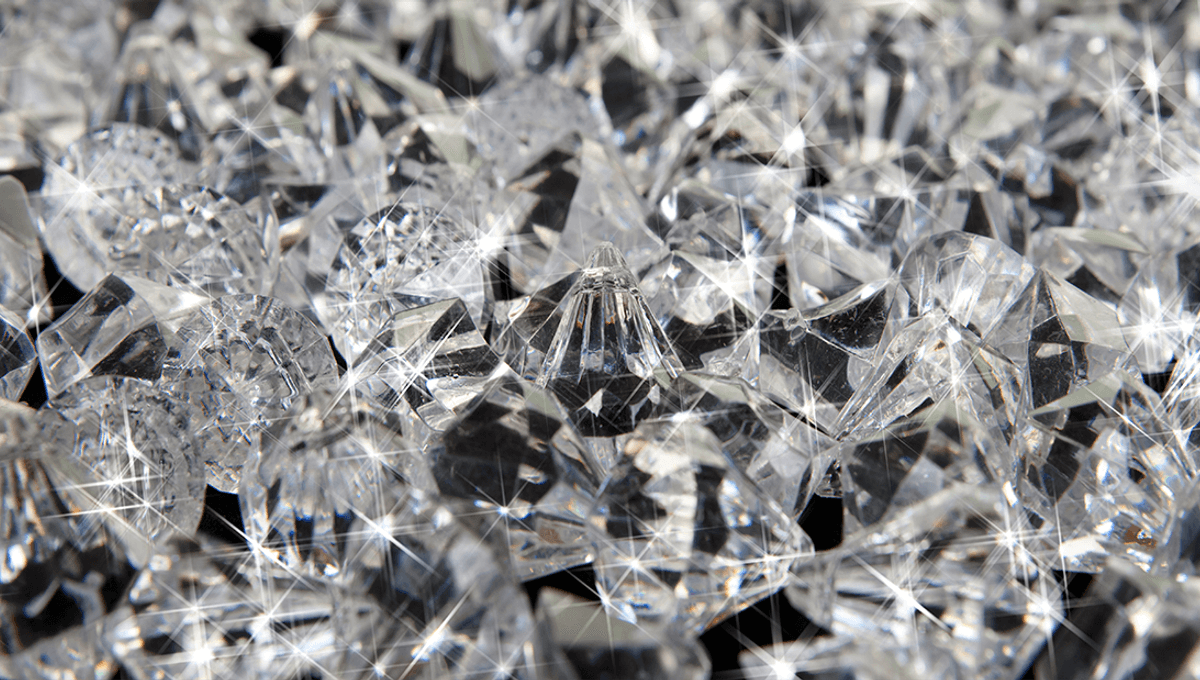
A team of scientists from two universities in China have synthesized a material harder than diamond in the laboratory.
ADVERTISEMENT GO AD FREE
When carbon is subjected to extreme heat and pressure within the Earth, it can crystalize to form diamonds; the hardest (though not necessarily the toughest) natural mineral on the planet. In diamond, each carbon atom is bonded to four other carbon atoms in a tetrahedral arrangement. But under the right circumstances, carbon can arrange itself hexagonally, forming a hardier material known as lonsdaleite.
We know about the existence of lonsdaleite thanks to a meteorite impact that formed it.
In 1891, examining a meteorite in Canyon Diablo, Arizona, scientists reported finding “hard particles” within it. Later, in 1939, these hard particles were confirmed to be a mixture of diamonds, graphite, and a new substance that had never been seen before, now called lonsdaleite after crystallographer Professor Dame Kathleen Lonsdale.
At first, scientists had expected the unusual material to be diamond with a hexagonal structure, rather than the classic cubic diamonds we are used to. Studying samples of the meteorite in 2022, however, a team found that they were composed of nanostructured hexagonal and cubic diamonds with graphene-like growths in between. The sample was technically a diaphite, where two minerals grow at the same time, resulting in a less-ordered crystal structure full of stacking “errors”.
“Evidence suggests these ‘diamonds’ formed by shock compression of the initial graphite,” the team wrote in their paper. “It was noted from Raman spectroscopy that a few areas within some grains exhibited the characteristic sharp peak of crystalline cubic diamond, indicating that these had achieved sufficiently high temperature during the shock event to complete the thermodynamic transformation.”
ADVERTISEMENT GO AD FREE
As well as being pretty awesome that meteorites can impact with so much force that they create hexagonal diamonds, it threw up the prospect that scientists might be able to synthesize them.
“With potentially superior mechanical properties and an intriguing structure, lonsdaleite has also received intense research interest in materials science,” the new team explain in their paper. “Theoretical calculations suggest that HD [hexagonal diamond] may even surpass cubic diamond (CD), the hardest and least compressible material known in nature today.”
Using shock compression techniques aimed at mimicking the natural production of these “super diamonds”, researchers have been able to produce them in the past. However, in the process, they ended up with a lot of graphite and diamonds too. In the new work, the team used pressure and temperature to manufacture lonsdaleite, optimizing the conditions for production.
“Theoretical calculations suggest that the total energy of CD is a little lower than that of HD, and that, when starting from the graphite precursor, the energy barrier of the direct graphite-to-CD transition is slightly lower than that for the graphite-to-HD transformation, and thus CD has usually been the dominant product,” the team explain in their study.
ADVERTISEMENT GO AD FREE
“To overcome such unfavourable factors for HD growth, we synthesized HD from graphite via intermediate post-graphite phases in which interlayer bonding may lock a near-AB stacking in the compressed graphite and hinder the further sliding of layers during high-temperature stimulation, favouring the formation of HD. Both our experiments and simulations indicate that, besides the formation of the post-graphite phase, the presence of a temperature gradient is also critical for HD synthesis.”
As well as potentially paving way for new superconductors, and being able to withstand around 58 percent more stress than diamonds, producing the material in the lab could tell us about the formation of natural lonsdaleite.
“For example, natural lonsdaleite is scarcely found on Earth because the planetary interior can seldom provide suitable […] conditions,” the team concludes. “More importantly, the excellent thermal stability and ultrahigh hardness of HD suggest its great potential for industrial applications, providing opportunities for this remarkable material.”
The study is published in Nature Materials.
Source Link: "Super Diamond": World's Hardest Material Synthesized In Chinese Laboratory